Country
Crash of a Short 360-300 off Edinburgh: 2 killed
Date & Time:
Feb 27, 2001 at 1731 LT
Registration:
G-BNMT
Survivors:
No
Schedule:
Edinburgh – Belfast
MSN:
3723
YOM:
1987
Flight number:
LOG670A
Crew on board:
2
Crew fatalities:
Pax on board:
0
Pax fatalities:
Other fatalities:
Total fatalities:
2
Captain / Total hours on type:
972.00
Copilot / Total hours on type:
72
Circumstances:
The aircraft landed at Edinburgh Airport, Scotland, at 00:03 and was parked there on Stand 31 in conditions including light and moderate snowfall. After preparation for a Royal Mail charter flight 670A to Belfast, start clearance was given at 15:03. At 15:12 hrs the crew advised ATC they were shutting down due to a technical problem. The crew then advised their company that a generator would not come on line. An avionics technician carried out diagnosis during which both engines were ground-run twice. No fault was found and the flight crew requested taxi clearance at 17:10. A normal take off from runway 06 was carried out followed by a reduction to climb power at 1,200 feet amsl. At 2,200 feet amsl the aircraft anti-icing systems were selected on. Three seconds later the torque on each engine reduced rapidly to zero. A MAYDAY call was made by the crew advising that they had experienced a double engine failure. The aircraft was ditched in the Firth of Forth estuary some 100 meters from the shoreline near Granton Harbour. Both pilots were killed. Weather reported just before the accident with a temperature of +2°C, dewpoint of -3°C, visibility of more then 10 km, broken clouds at 4500 feet and cover at 8000 feet.
Probable cause:
The following causal factors were identified:
1) The operator did not have an established practical procedure for flight crews to fit engine intake blanks (‘bungs’) in adverse weather conditions. This meant that the advice contained in the aircraft manufacturer’s Maintenance Manual ‘Freezing weather-precautions’ was not complied with. Furthermore intake blanks were not provided on the aircraft nor were any readily available at Edinburgh Airport.
2) A significant amount of snow almost certainly entered into the engine air intakes as a result of the aircraft being parked heading directly into strong surface winds during conditions of light to moderate snowfall overnight.
3) The flow characteristics of the engine intake system most probably allowed large volumes of snow, ice or slush to accumulate in areas where it would not have been readily visible to the crew during a normal pre-flight inspection.
4) At some stage, probably after engine ground running began, the deposits of snow, ice or slush almost certainly migrated from the plenum chambers down to the region of the intake anti-ice vanes. Conditions in the intakes prior to takeoff are considered to have caused re-freezing of the contaminant, allowing a significant proportion to remain in a state which precluded its ingestion into the engines during taxi, takeoff and initial climb.
5) Movement of the intake anti-icing vanes, acting in conjunction with the presence of snow, ice or slush in the intake systems, altered the engine intake air flow conditions and resulted in the near simultaneous flameout of both engines.
6) The standard operating procedure of selecting both intake anti-ice vane switches simultaneously, rather than sequentially with a time interval, eliminated a valuable means of protection against a simultaneous double engine flameout.
1) The operator did not have an established practical procedure for flight crews to fit engine intake blanks (‘bungs’) in adverse weather conditions. This meant that the advice contained in the aircraft manufacturer’s Maintenance Manual ‘Freezing weather-precautions’ was not complied with. Furthermore intake blanks were not provided on the aircraft nor were any readily available at Edinburgh Airport.
2) A significant amount of snow almost certainly entered into the engine air intakes as a result of the aircraft being parked heading directly into strong surface winds during conditions of light to moderate snowfall overnight.
3) The flow characteristics of the engine intake system most probably allowed large volumes of snow, ice or slush to accumulate in areas where it would not have been readily visible to the crew during a normal pre-flight inspection.
4) At some stage, probably after engine ground running began, the deposits of snow, ice or slush almost certainly migrated from the plenum chambers down to the region of the intake anti-ice vanes. Conditions in the intakes prior to takeoff are considered to have caused re-freezing of the contaminant, allowing a significant proportion to remain in a state which precluded its ingestion into the engines during taxi, takeoff and initial climb.
5) Movement of the intake anti-icing vanes, acting in conjunction with the presence of snow, ice or slush in the intake systems, altered the engine intake air flow conditions and resulted in the near simultaneous flameout of both engines.
6) The standard operating procedure of selecting both intake anti-ice vane switches simultaneously, rather than sequentially with a time interval, eliminated a valuable means of protection against a simultaneous double engine flameout.
Final Report:
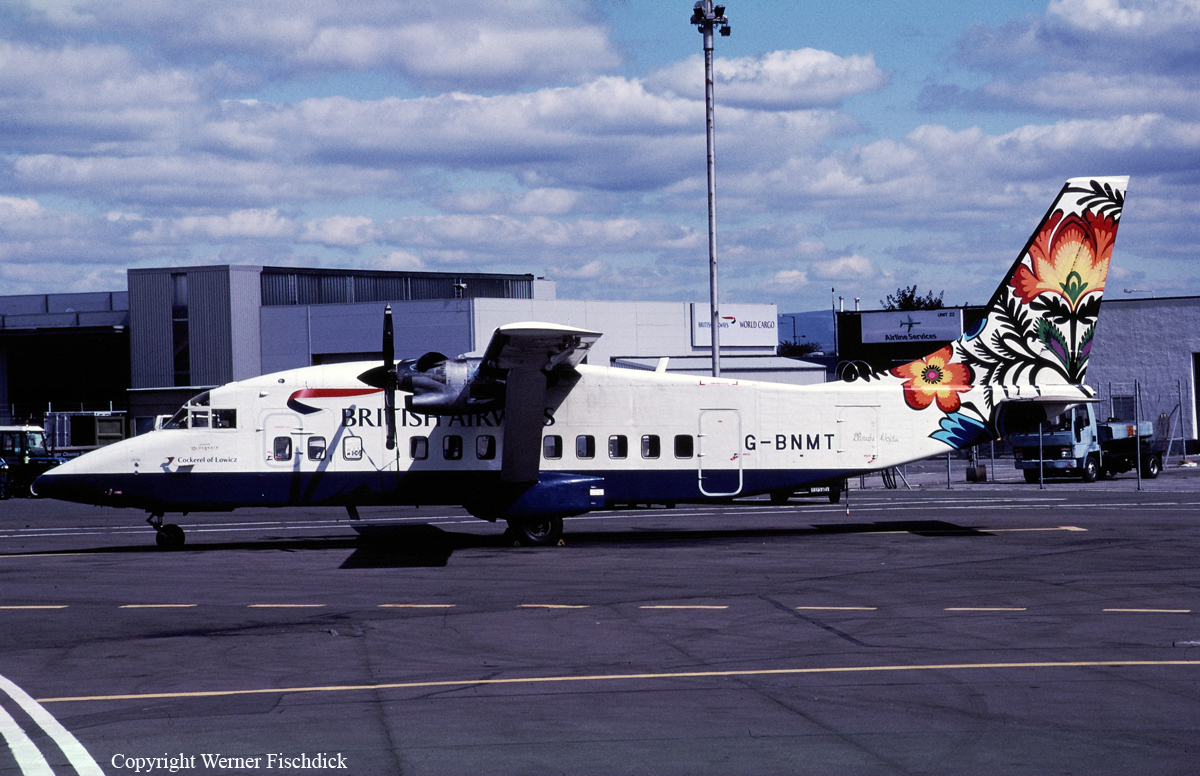
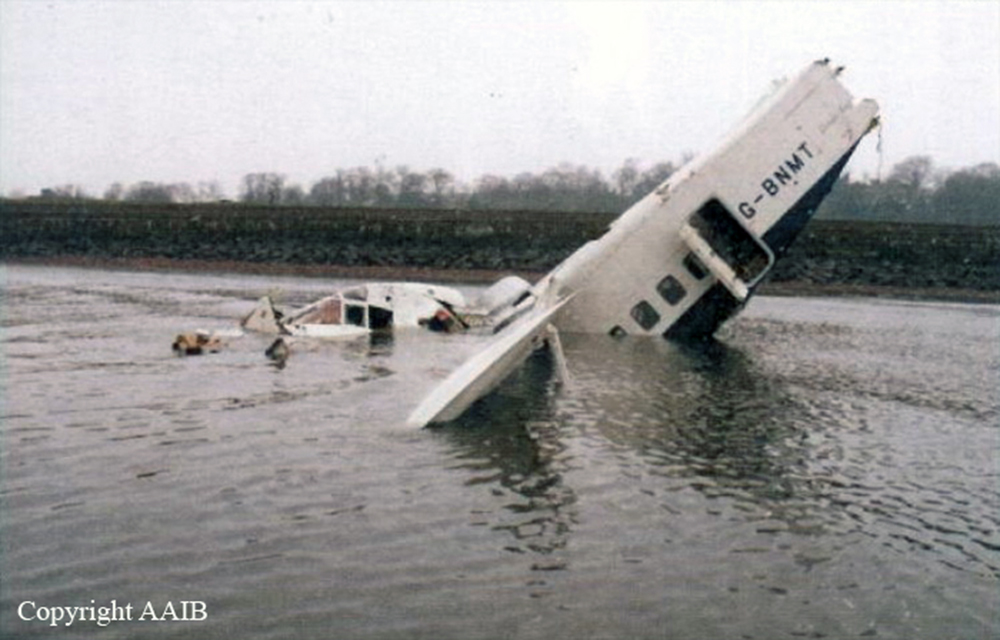
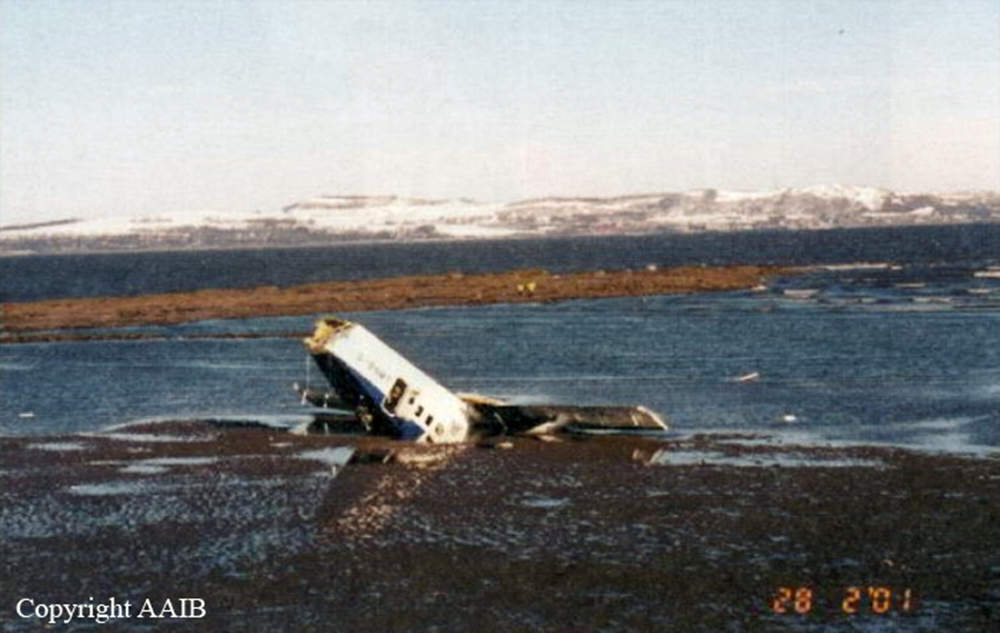
Crash of a Short 360-100 in Sheffield
Date & Time:
Feb 4, 2001 at 1921 LT
Registration:
EI-BPD
Survivors:
Yes
Schedule:
Dublin – Sheffield
MSN:
3656
YOM:
1984
Crew on board:
3
Crew fatalities:
Pax on board:
25
Pax fatalities:
Other fatalities:
Total fatalities:
0
Captain / Total hours on type:
1392.00
Circumstances:
The crew were planned to fly a scheduled passenger flight from Dublin to Sheffield airport and the commander was the handling pilot for the flight. Both pilots had operated into Sheffield between five and ten times in the previous three months. The aircraft, which was serviceable, took off from Dublin at 1814 hrs and was routed to Sheffield via the VOR/DME navigation beacon at Wallasey at FL90. Prior to descent, the crew obtained the most recent information from the Automatic Terminal Information Service (ATIS); this report, timed at 1820 hrs, was identified as 'Information Hotel'. The reported conditions at Sheffield were: surface wind variable at 03 kt, visibility 4,000 metres in rain and snow, a few clouds at 600 feet, scattered cloud at 1,200 feet and broken cloud at 3,000 feet, the temperature and dew point were coincident at +1°C and the QNH was 989 hPa. Air traffic control was passed to the Sheffield approach controller when the aircraft was 12 nm from the overhead at which time it was descending to 5,000 feet on the QNH. The crew were informed that the current ATIS was now 'Information India' and the aircraft was cleared to descend to 3,000 feet when within 10 nm of the airport. 'Information India', timed at 1850 hrs, contained no significant changes from 'Information Hotel'. The aircraft weight for the landing was calculated to be 11,100 kg with an associated threshold speed of 103 kt. The aircraft was cleared for the ILS/DME procedure for Runway 28 and the crew requested the QFE which was 980 hPa. The decision height for the approach was 400 feet. During the initial stages of the manually flown ILS approach the commander's flight director warning flag appeared briefly but then disappeared and did not reappear during the remaining period of flight. The de-ice boots had been selected to 'ON' early in the descent when the aircraft had briefly encountered light icing. These de-ice boots were selected to 'OFF' when at 5 nm from the runway at which stage there were no indications of icing and the indicated outside air temperature was +5°C. (This is indicative of an actual air temperature of +2°C.) At 1918:11 hrs the crew reported that they were established on the localiser. When the aircraft intercepted the glidepath, the flaps were set to 15° correctly configuring the aircraft for the approach. The handling pilot recalled that initially the rate of descent was slightly higher than the expected 650 ft/min leading him to suspect the presence of a tailwind, however, the rate of descent returned to a more normal value when approximately 4 nm from the runway. The propellers were set to the maximum rpm at 1,200 feet agl. When the crew reported that they were inside 4 nm they were cleared to land and passed the surface wind, which was variable at 2 kt; they were also warned that the runway surface was wet. Both pilots saw the runway lights when approaching 400 feet agl; the flaps were selected to 30° and confirmed at that position. Both pilots believed that the airspeed was satisfactory but, as the commander checked back on the control column for the landing, the rate of descent increased noticeably and the aircraft landed firmly. Both pilots believed that the power levers were in the flight idle position and neither was aware of any unusual control inputs during the landing flare. Two separate witnesses saw the aircraft during the later stages of the approach and the subsequent landing, one of these witnesses was in the control tower and the other was standing in front of the passenger terminal. They both saw the aircraft come into view at a height of approximately 400 feet and apparently travelling faster than normal. They described the aircraft striking the ground very hard with the left wing low; both heard a loud noise coincident with the initial contact. They then reported that the aircraft bounced before hitting the ground again, this time with the nose wheel first, before bouncing once more. Crew statements and flight data evidence indicate that the aircraft lifted no more than 8 feet before settling on the runway and then remained on the ground. The aircraft was then seen to travel about half way along the runway before slewing to the left and running onto the grass. When the aircraft stopped the left wing tip appeared to be touching the grass. When the aircraft came to rest the tower controller asked the crew if they required assistance, this call was timed at 1921:15 hrs. The crew asked for the fire services to be placed on standby but the controller judged that the situation required an immediate and full emergency response and activated the fire and rescue services. The airfield fire services arrived at the aircraft at 1924 hrs and all the passengers had been evacuated by 1925 hrs. The South Yorkshire fire and rescue services arrived at 1933 hrs and assisted in ferrying passengers to the terminal building.
Probable cause:
Evidence from the CVR indicated that the flight was conducted in a thoroughly professional manner in accordance the operator's normal procedures until the final stages of the approach. The recorded data indicate that three seconds prior to touchdown the propeller blade angle changed from the flight range to the ground range. Coincident with this change the CVR recorded sounds consistent with the propellers 'disking' and the FDR indicated that the aircraft then decelerated longitudinally and accelerated downwards. The engineering investigation revealed that the propeller control rigging and the operation of the flight idle baulk were correct. Selection of ground fine requires the pilot to firstly release the flight idle baulk and then lift and pull the propeller levers further back, this combined action rapidly becomes a programmed motor skill in the routine of daily operations. It is therefore possible that the handling pilot unintentionally selected the propellers into the ground fine position whilst still in the air.
Final Report:
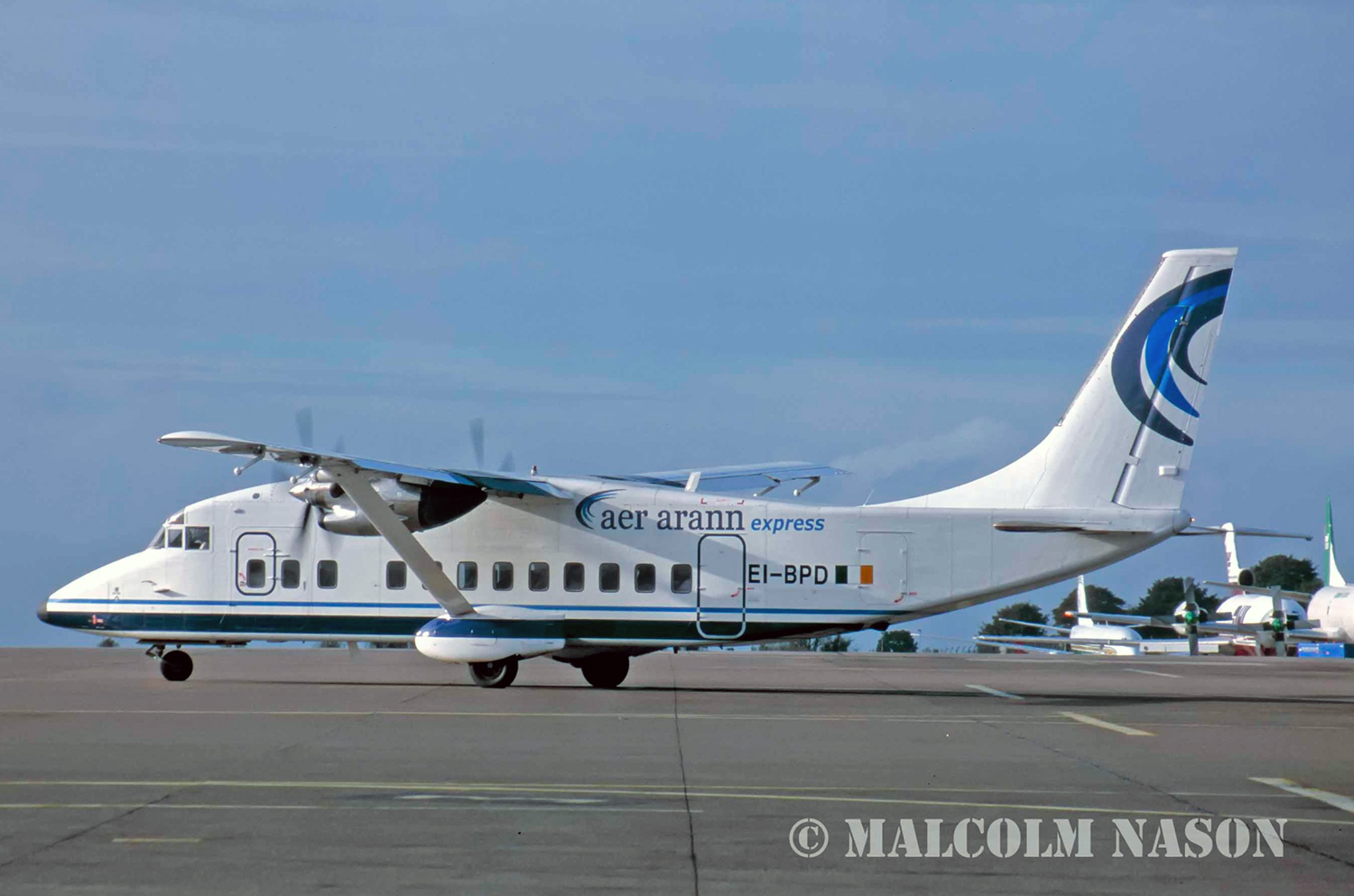
Crash of a Short 360 in Marsa al Burayqah: 22 killed
Date & Time:
Jan 13, 2000 at 1238 LT
Registration:
HB-AAM
Survivors:
Yes
Schedule:
Tripoli - Marsa el Brega
MSN:
3763
YOM:
1990
Crew on board:
3
Crew fatalities:
Pax on board:
38
Pax fatalities:
Other fatalities:
Total fatalities:
22
Captain / Total hours on type:
3840.00
Copilot / Total hours on type:
1950
Aircraft flight hours:
7138
Circumstances:
The aircraft took off at 0929 utc from Tripoli-Intl Airport with two flight crew, one cabin crew and 38 passengers of which three children and one infant with 3,200 lbs of fuel on board. The aircraft flew on the route Tripoli - Beniwalid - Tilal direct to Marsa Brega. During flight, the crew have noticed fuel imbalance so they did a cross feeding until fuel balanced at 11:17:12 utc. At 11:25:51 utc, the aircraft started to descend from FL070 at 40 nm from Marsa Brega. At 11:36:57 utc, the left engine flamed out and the captain asked his f/o to confirm left engine failure at 11:37:27 utc. The f/o confirmed the left engine failure at 11:37:28 utc. The right engine flamed out at 11:37:39 utc. The captain asked his f/o to inform soc operation at Marsa Brega about the two engines failure and his decision to ditch at 11:37:57 utc. The captain asked his f/o to relight the engine at 11:38:05 utc. The GPWS activated since the aircraft was in an unsafe situation. At 11:38:34 utc, the aircraft ditched in the sea at 30 23.457 N 019 28.953 E. Both pilots and 17 other occupants were rescued while 22 other people including the cabin crew were killed. The aircraft was destroyed. Most of the passengers were employees of the Sirte Oil Company and working at the Marsa Brega Oil Complex. On board were 15 Libyans (among them both pilots), 13 British, two Canadians, three Indians, three Croatians, three Philippines, one Pakistan and one Tunisian, the cabin crew. Operated by the Libyan Sirte Oil Company, the aircraft was owned by Avisto, a Swiss operator.
Probable cause:
The following findings were identified:
- The crew was properly certificated and qualified for the flight.
- There was no evidence of factors which would have detracted from the crews physical ability to operate the aircraft,
- The aircraft was properly certificated.
- The certificate of airworthiness has no expiry date according to Swiss regulations and considered to be valid and of transport category.
- The certificate of maintenance was valid.
- The insurance policy certificate was valid.
- The aircraft weight and CofG were within prescribed limits.
- The aircraft flew five sectors on that day before the crash flight.
- The emergency doors were not used except the cockpit emergency hatch.
- Fuel samples analyzed and found up to jet a1 specification.
- The aircraft was not in landing configuration, landing gear up and flaps up.
- The passengers were not informed about the aircraft ditching.
- The tail unit and the aircraft nose has destroyed which led the aircraft to sink in few minutes.
- The aircraft was equipped with a GPWS system.
- The aircraft maintenance schedule was not approved by FOCA.
Probable causes:
- Melting of ice formed at engines intake resulted in ware ingestion and both engine flame out.
- The flight crew failed to operate the engine anti-icing system.
- The flight crew were busy with a discussion not relevant to their flight of the aircraft.
- The crew was properly certificated and qualified for the flight.
- There was no evidence of factors which would have detracted from the crews physical ability to operate the aircraft,
- The aircraft was properly certificated.
- The certificate of airworthiness has no expiry date according to Swiss regulations and considered to be valid and of transport category.
- The certificate of maintenance was valid.
- The insurance policy certificate was valid.
- The aircraft weight and CofG were within prescribed limits.
- The aircraft flew five sectors on that day before the crash flight.
- The emergency doors were not used except the cockpit emergency hatch.
- Fuel samples analyzed and found up to jet a1 specification.
- The aircraft was not in landing configuration, landing gear up and flaps up.
- The passengers were not informed about the aircraft ditching.
- The tail unit and the aircraft nose has destroyed which led the aircraft to sink in few minutes.
- The aircraft was equipped with a GPWS system.
- The aircraft maintenance schedule was not approved by FOCA.
Probable causes:
- Melting of ice formed at engines intake resulted in ware ingestion and both engine flame out.
- The flight crew failed to operate the engine anti-icing system.
- The flight crew were busy with a discussion not relevant to their flight of the aircraft.
Final Report:
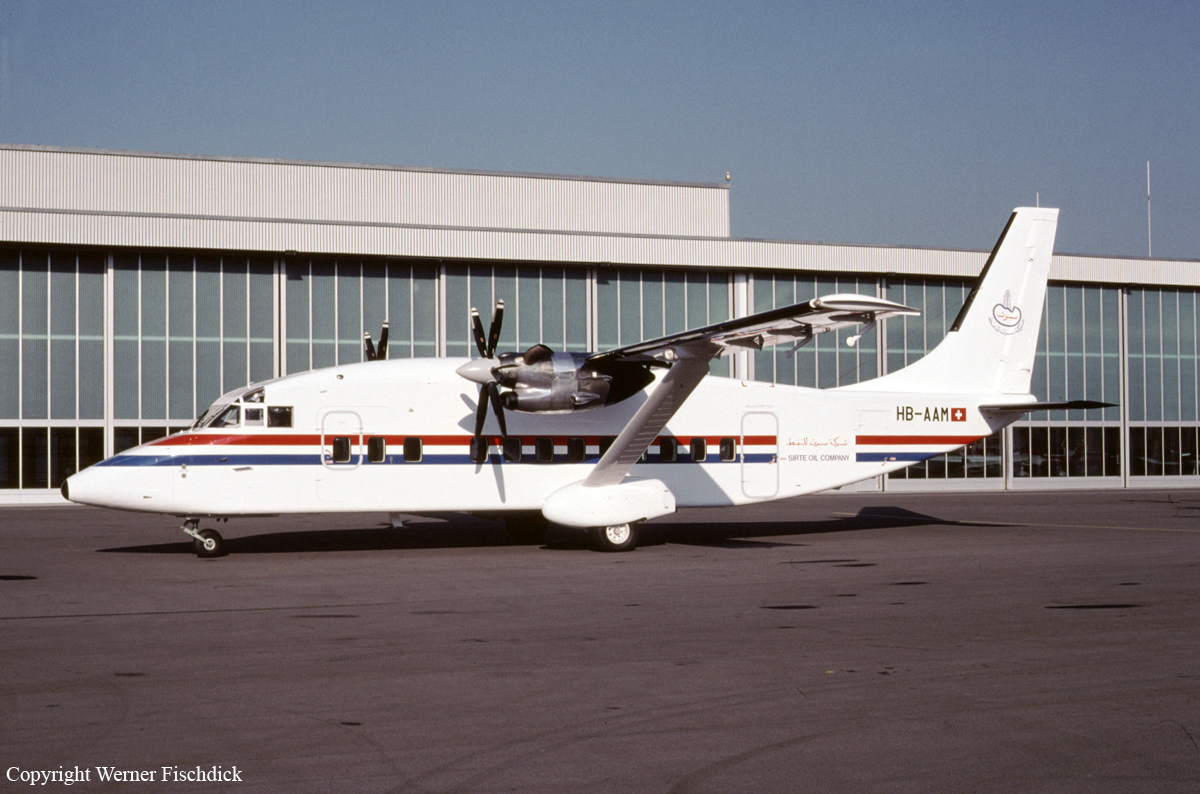
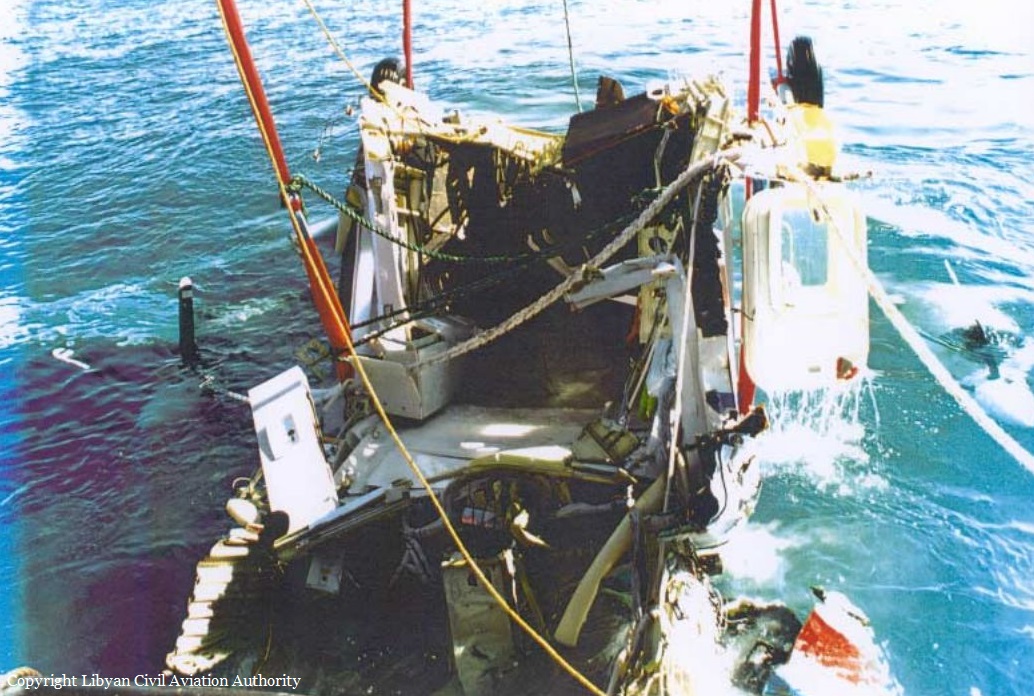
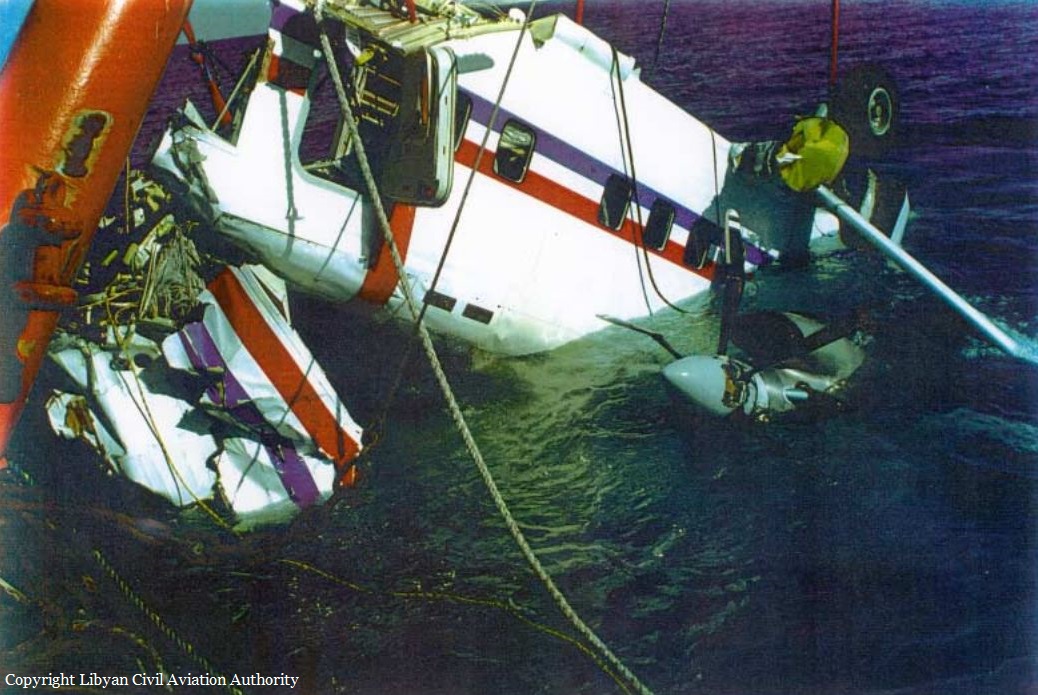
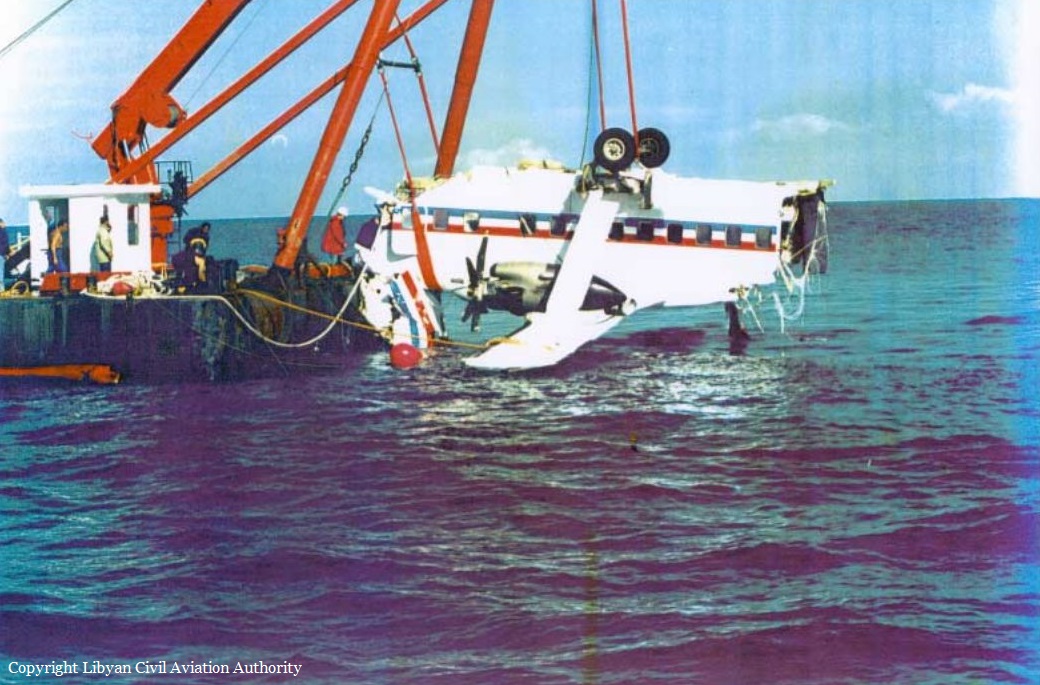
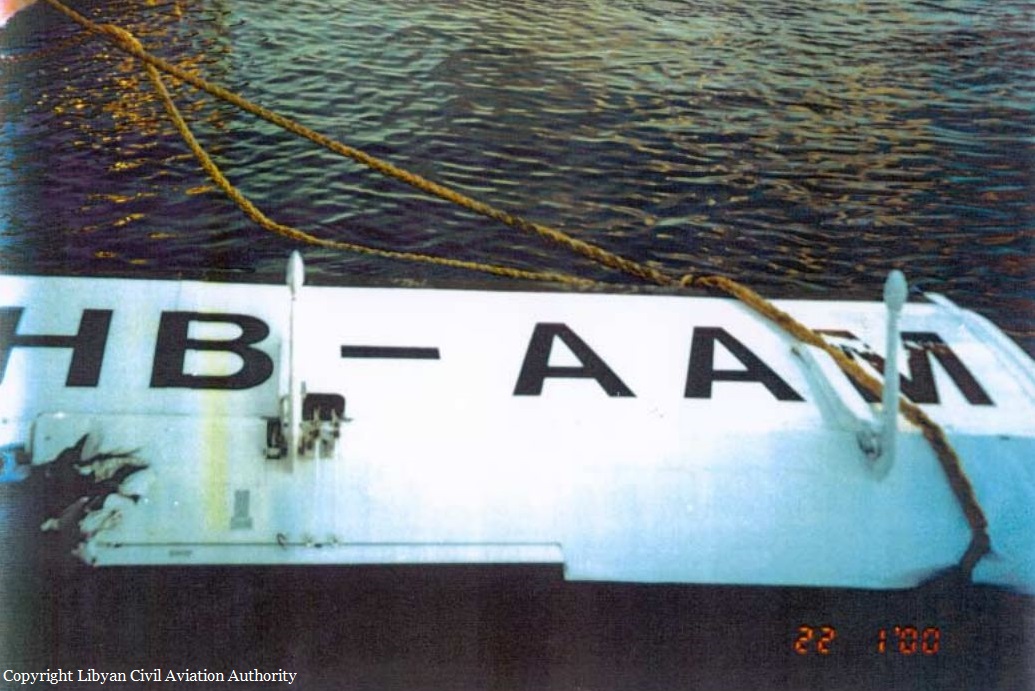
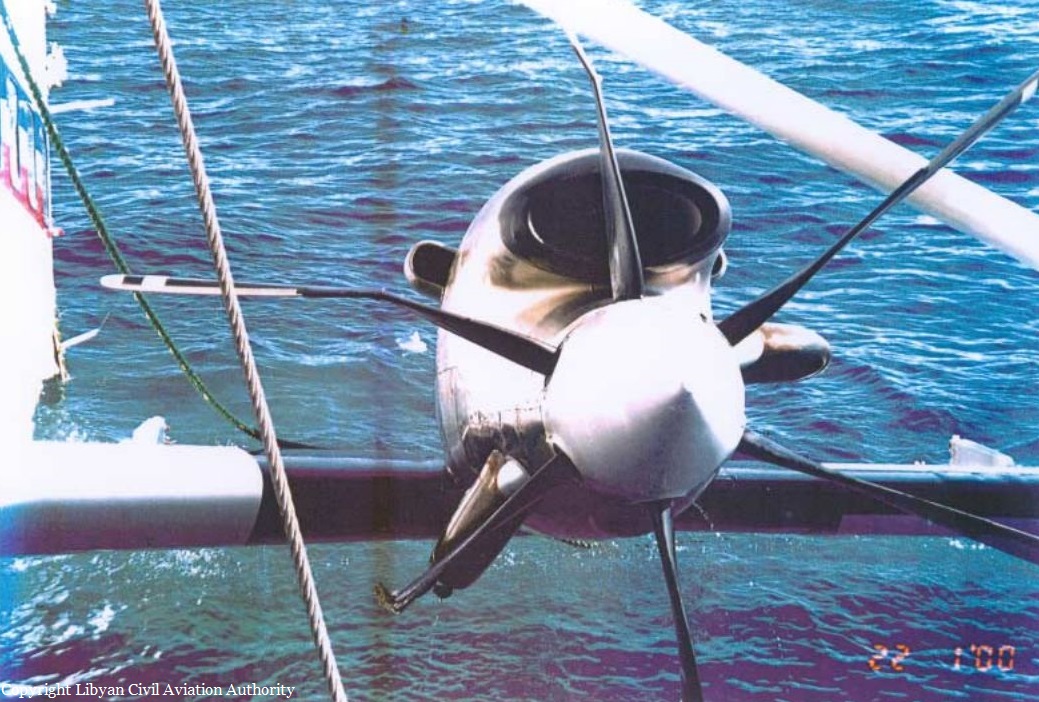
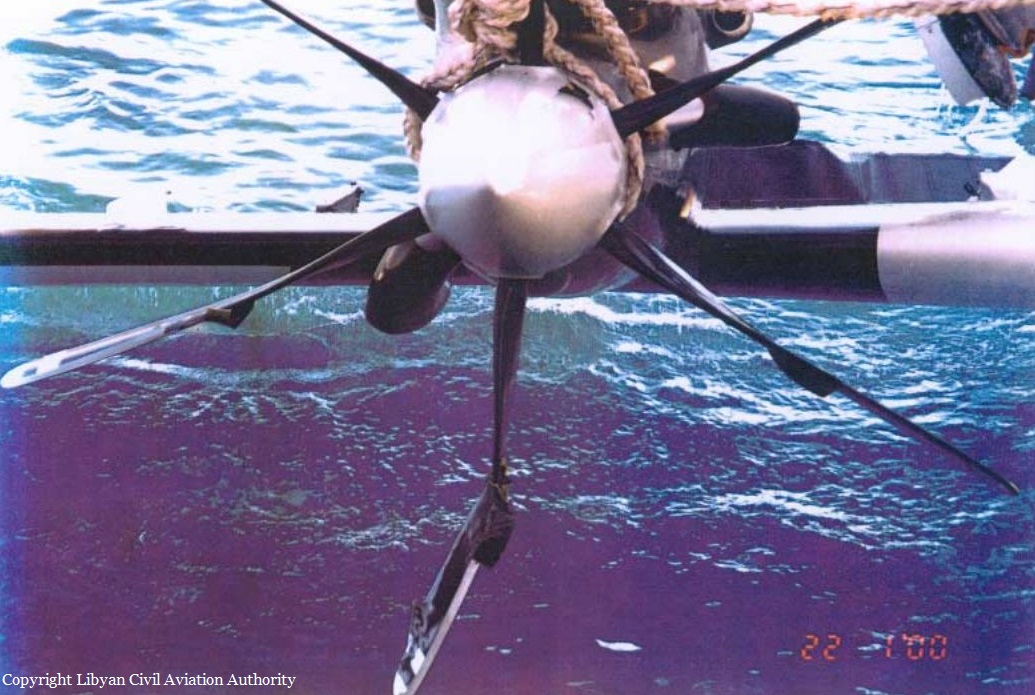
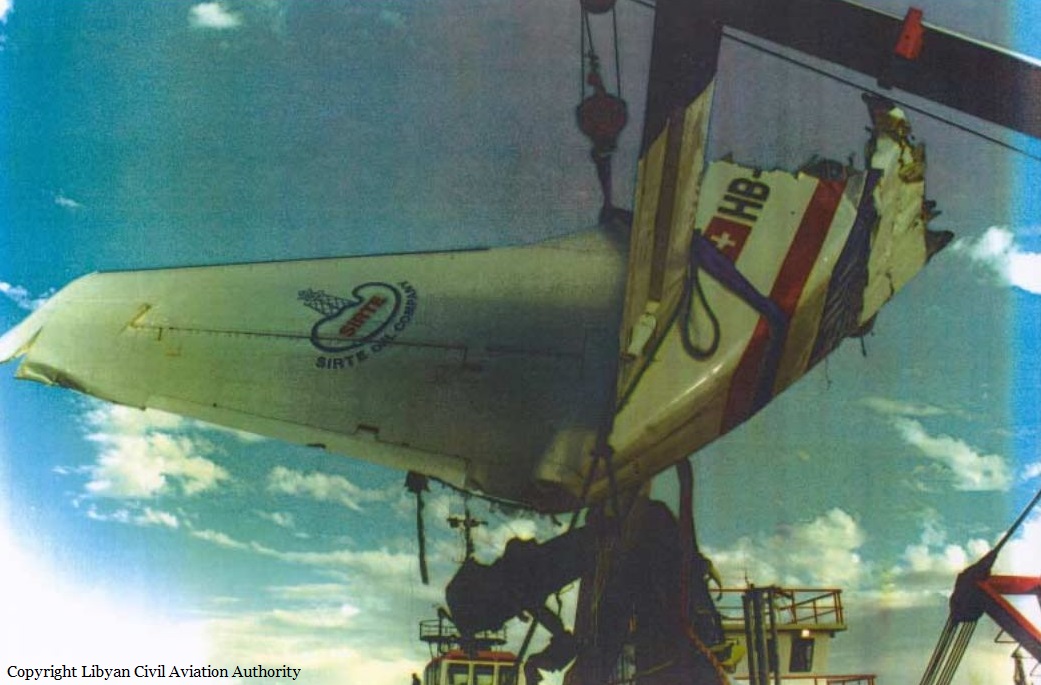
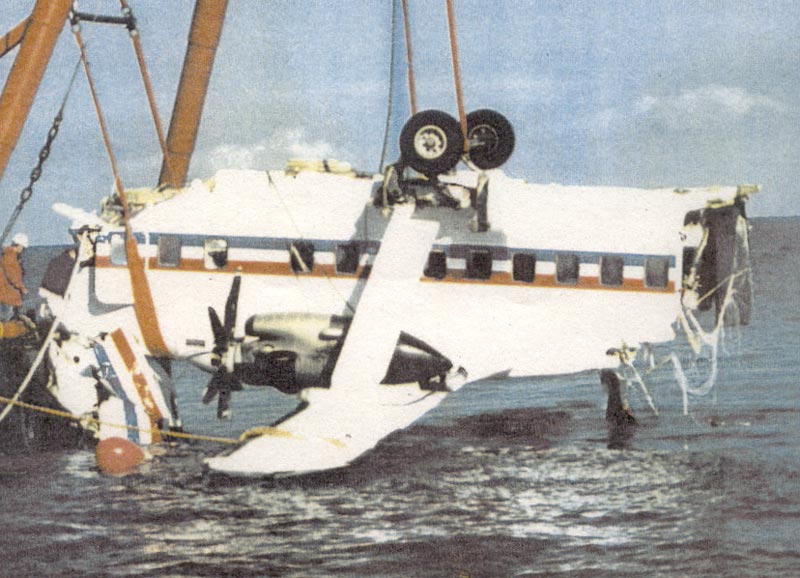
Crash of a Short 360-100 in Stornoway
Date & Time:
Feb 9, 1998 at 1147 LT
Registration:
G-BLGB
Survivors:
Yes
Schedule:
Benbecula - Stornoway
MSN:
3641
YOM:
1984
Crew on board:
4
Crew fatalities:
Pax on board:
26
Pax fatalities:
Other fatalities:
Total fatalities:
0
Captain / Total hours on type:
5000.00
Circumstances:
This final sector was flown at FL 50, with the aircraft in IMC conditions. The crew noted no indication of ice at this level and the use of the aircraft de-icing equipment was not required. Prior to their approach to Stornoway, the crew contacted ATC and noted the following information: Runway 36 in use, surface wind 260°/ 08 kt, visibility 15 km in light drizzle, cloud few at 800 feet and broken at 1,400 feet agl, temperature plus 7°C and QNH 1002 mb. The commander then briefed for a NDB/DME approach for Runway 36. With G-BLGB still at FL 50, the crew completed the 'Descent' checks and then, when cleared for the procedure completed the 'Approach' checks 'to the line'. The initial approach was normal and the crew were VMC at a range of approximately 8 nm from the airfield. At this stage the commander was certain of his geographical position and, with the agreement of his first officer, decided to continue visually. Although they were in sight of the surface, there appeared to be some patchy cloud in the direction of the airfield and neither pilot could see the runway. The crew completed the rest of the 'Approach' checks and then did the 'Final' checks down to 'Flaps'; Flap 15 had been selected. By now, the commander was level at his minimum descent altitude (MDA) of 430 feet amsl. Shortly afterwards, the crew acquired visual contact with the runway; the aircraft was to the right of the extended centreline and the crew could see the Precision Approach Path Indicators (PAPI) which were indicating 'four whites'; the commander estimated his range from the runway as one mile. He subsequently recalled that, at the time he considered 'going around' but, considering the length of Stornoway runway, decided to land. The commander called for "Full flap" and for "Props to max", and manoeuvred G-BLGB to the runway extended centreline. His subsequent approach was based on runway perspective with the intention of touching down beside the PAPIs. During this final approach, the first officer was monitoring the airspeed and initially called out "Plus 10"; this signified a speed of 113 kt based on a VAT of 103 kt. Thereafter, he called "Plus 5", "VAT" and then "Minus 5" before calling for "Power" on several occasions just before touchdown. Neither pilot could remember the PAPI lights during this final part of the approach and the commander did not think that he exceeded 1,000 feet per minute rate of descent. He was certain that the Ground Proximity Warning System (GPWS) had not activated during the final approach. The commander remembers pulling back on the control wheel just before touchdown but that this had no effect on the rate of descent; he also advanced the power levers but the aircraft had landed before any increase in power was apparent. Touchdown was 'Firm' and beside the PAPIs. On landing, there was a 'bang' and the left side of the aircraft went down. G-BLGB slewed to the left and the commander used full right rudder and brake in an attempt to counter this movement. The aircraft came to rest at the left edge of the runway. With the aircraft stopped, the first officer shut both engines down and the commander switched off the 'Electrics'. The commander then opened the door to the cabin and, saw that the rear emergency door at the rear right side was open and the evacuation was in progress; the flight crew followed the passengers out of the door. Immediately following the landing, the first officer declared a 'problem' to ATC. The controller had been monitoring the approach and noted the apparent lack of a normal flare; following the call from the crew, he immediately activated the 'Crash Alarm'. Within 30 seconds, the AFS had manned their vehicles and had checked in with the controller; the AFS were cleared direct to the aircraft and arrived there within a minute of the initial call. There was no indication of fire but, with fluid leaking from the right gear, the AFS sprayed the area with foam.
Final Report:
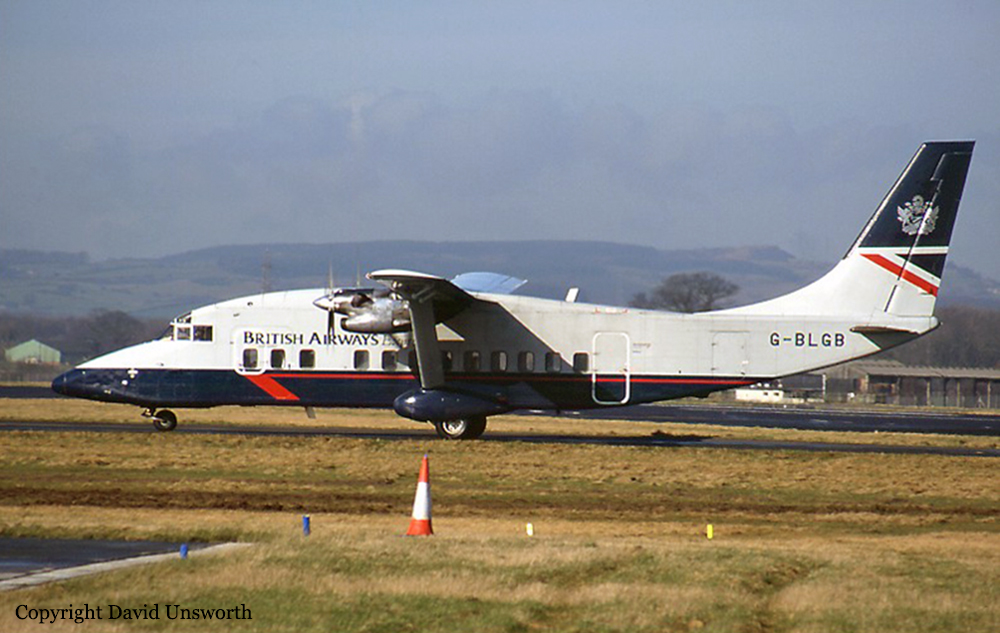
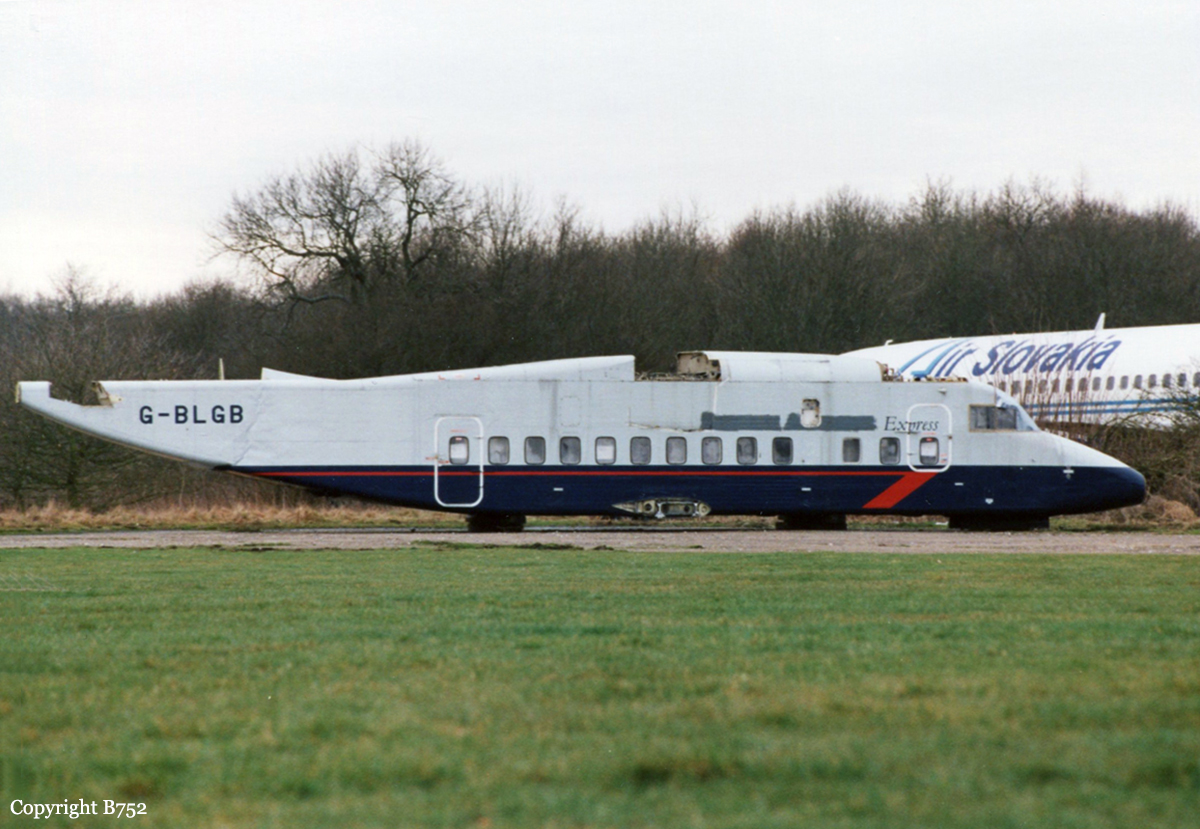
Crash of a Short 360-100 in Billings
Date & Time:
Nov 25, 1997 at 0813 LT
Registration:
N691A
Survivors:
Yes
Schedule:
Great Falls - Billings
MSN:
3618
YOM:
1983
Flight number:
CPT814
Crew on board:
2
Crew fatalities:
Pax on board:
0
Pax fatalities:
Other fatalities:
Total fatalities:
0
Captain / Total hours on type:
2800.00
Copilot / Total hours on type:
103
Aircraft flight hours:
18213
Circumstances:
The Short Brothers SD3-60 cargo flight was being vectored for the VOR/DME RWY 28R approach to the Billings Logan International airport during instrument meteorological conditions. Weather conditions one minute before the accident were winds 020 at 13 knots, light snow and mist, and visibility was deteriorating rapidly. The co-pilot (occupying the right seat) was flying the aircraft, and the PIC (occupying the left seat) was handling radio communications. At 0812:25, having crossed the final approach fix, the aircraft descended through 100 feet above the MDA (3,940 feet or 426 feet above the runway threshold), and immediately thereafter the crew visually acquired the runway. At 0813:01 the aircraft's GPWS alert of 'SINK RATE' was heard, followed 2 seconds later by the PIC calling for 'POWER,' and a 2 second delay to ground impact. The co-pilot had logged a total of 103 hours in the SD3-60 (all within the previous 90 days,) while the PIC had just begun flying the aircraft in Montana's late fall weather after a 6 year assignment flying in the Hawaiian islands. The left main landing gear collapsed in overload during the ground impact.
Probable cause:
The co-pilot's failure to maintain the proper descent rate on final approach, the pilot-in-command's delayed remedial action, and overload of the left main landing gear assembly. Factors contributing were snow, crosswind conditions and deteriorating visibility.
Final Report:
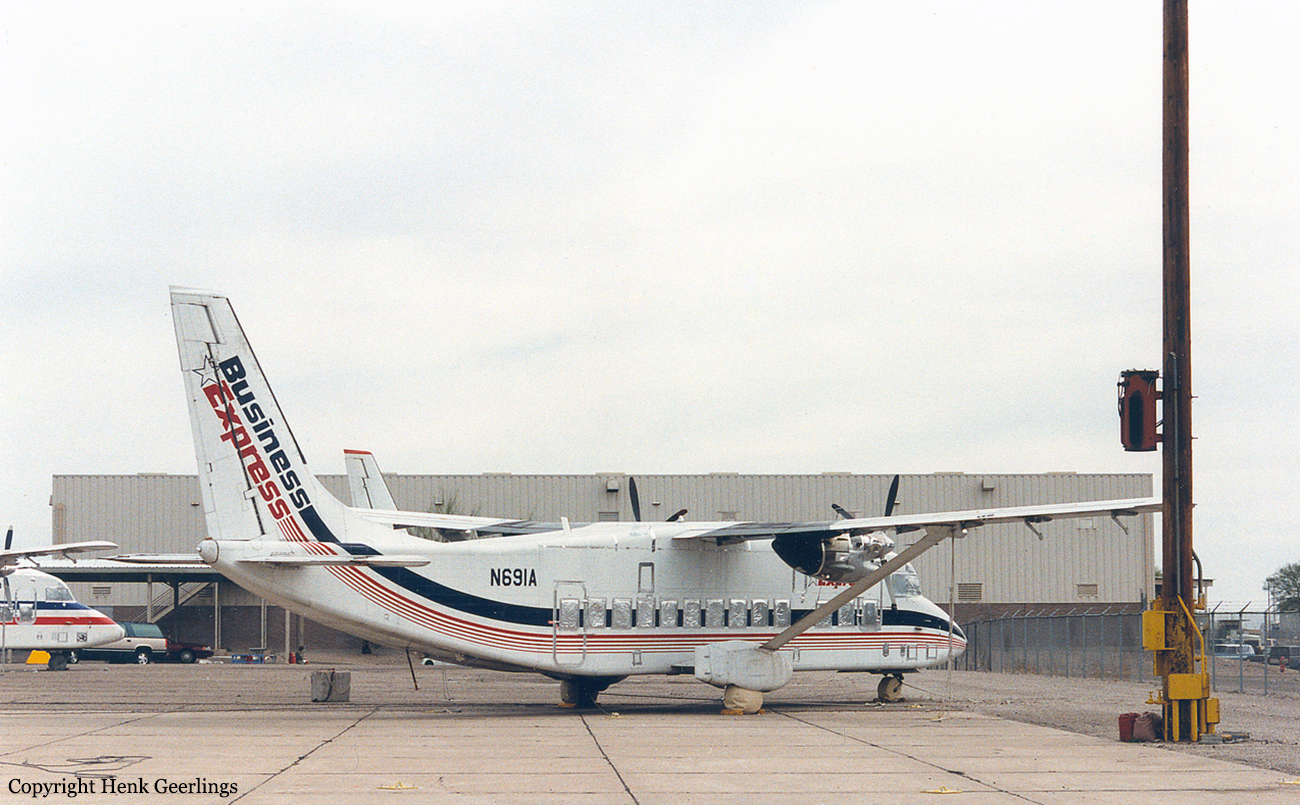
Crash of a Short 360-330 near Iligan: 15 killed
Date & Time:
Dec 13, 1987 at 0720 LT
Registration:
EI-BTJ
Survivors:
No
Schedule:
Cebu City - Iligan
MSN:
3719
YOM:
1987
Flight number:
PR443
Crew on board:
4
Crew fatalities:
Pax on board:
11
Pax fatalities:
Other fatalities:
Total fatalities:
15
Circumstances:
The crew started the approach to Iligan-Maria Cristina Airport in good weather conditions but the visibility was limited due to the night. On approach, the aircraft struck the slope of Mt Gurain located about 16 km south from runway 02 threshold. All 15 occupants were killed.
Probable cause:
Controlled flight into terrain.





